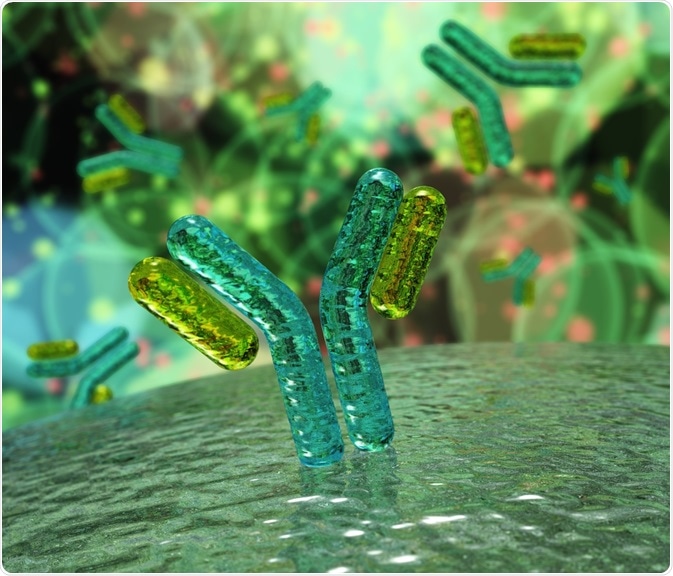Lateral flow assays are paper-based assays that detect compounds within a complex mixture, with the results being available within 5 – 30 minutes.
Lateral flow assays consist of test strips coated with dried reagents which become activated once the liquid sample(s) are applied to the strip.
 Image Credit: ustas7777777 / Shutterstock.com
Image Credit: ustas7777777 / Shutterstock.com
Lateral flow assays are easy and cheap to manufacture, and are therefore used for various purposes; these include pregnancy tests, the detection of heart attacks, kidney failure, and diabetes, to determine the presence of microbes to see if there is an infection or if food is contaminated, or to determine the presence or absence of illicit drugs.
These assays are designed for single use and can be used at the point of care or as needed.
Components of a lateral flow assay
The test strip is often a thin membrane, usually made from nitrocellulose, nylon, polyethersulfone, polyethylene or fused silica.
To support this, a layer of nylon or plastic is added to the test membrane. In this test membrane, two lines of labels are drawn on; these are mostly antibodies or antigens, which are molecules that antibodies bind to. These are the test and control lines.
In lateral flow assays, the liquid sample is moved through the test strips without the need for external force; i.e. the sample moves by capillary action. Samples are added to one end of the strip, and on the other end an absorbent pad is placed. This absorbent pad aids the capillary action in moving the sample through the test membrane.
How do Lateral Flow Assays Work.flv
Applying the sample to the test strip
The sample application pad, where the sample is added to the test, contains compounds such as salts and surfactants, which are necessary to facilitate the interaction of the compound of interest with the detection system. This is usually made of silica or cellulose. The sample application pad is in contact with the conjugate release pad.
Treating the samples
In order for the compound of interest to be detected, it needs to be further treated. This is usually done via binding of the target compound to antibodies, and this happens in the conjugate release pad. The antibodies have a reporter added to them, often in the form of nanoparticles. These are known as antibody-conjugates.
The nanoparticles are usually colloidal gold or latex, 15 – 800 nm in size and are either colored or coated in fluorescent dye. Newer and less frequently-used labels include selenium, carbon, quantum dots and phosphor technology. Liposomes can also be used, and these have either fluorescent or bioluminescent dyes incorporated into them.
Another method for detection is by the use of antibodies, which are termed lateral flow immunoassays. DNA can be detected by using either a DNA probe, which is a specific sequence that matching sequences of floating DNA can bind to (nucleic acid lateral flow assay), or by the use of antibodies (nucleic acid lateral flow immunoassay).
Detection
The labeled antibodies travel with the flow to the detection zone, where the test membrane is. The antibodies on the test line are specific to the compound of interest.
If the compound of interest is present in the sample, the compound binds to the antibody-conjugate and these then bind to the test line in the detection zone and become visible.
The antibody-conjugate cannot bind to the antibodies on the test line without the presence of the compound of interest, therefore there will be no line if the compound is not present.
Residual antibody-conjugates, or antibody-conjugates that did not bind to the compound of interest will travel on to the control line, where they will then bind to the antibodies there.
This then becomes visible, as above, and shows that the sample had flowed over the test line. These lines can then be seen by eye, or by machine.
Multiple compounds can be detected in one test by having multiple test lines to become an array. These assays are usually qualitative but can be made semi-quantitative by the use of multiple lines to detect the same compound of interest.
In this instance, the assay becomes a “ladder bars” assay, and the number of lines visible on the test correlates with the amount of the compound of interest; i.e. if there is a high concentration of the compound, then it is more likely that there will be excess that is then able to bind to subsequent lines, and thus produce more visible lines compared to a sample with lower concentration.
Further Reading